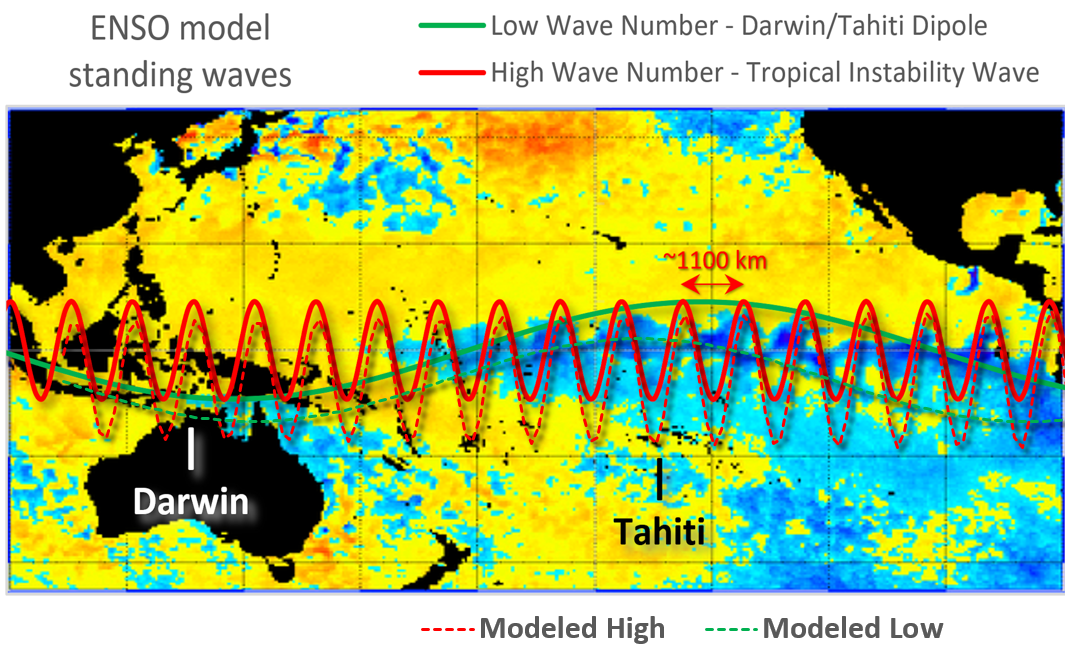In Chapter 12 of the book, the math model behind the equatorial Pacific ocean dipole known as the ENSO (El Nino /Southern Oscillation) was presented. Largely distinct to that, the climate index referred to as the Pacific Decadal Oscillation (PDO) occurs in the northern Pacific. As with modeling the AMO, understanding the dynamics of the PDO helps cross-validate the LTE theory for dipoles such as ENSO, as reported at the 2018 Fall Meeting of the AGU (poster). Again, if we can apply an identical forcing for PDO as for AMO and ENSO, then we can further cross-validate the LTE model. So by reusing that same forcing for an independent climate index such as PDO, we essentially remove a large number of degrees of freedom from the model and thus defend against claims of over-fitting.
Continue readingMonth: January 2020
Tropical Instability Waves
In Chapter 12 of the book, we present the hypothesis that tropical instability waves (TIW) of the equatorial Pacific are the higher wavenumber (and higher frequency) companion to the lower wavenumber ENSO (El Nino /Southern Oscillation) behavior. See Fig 1 below.

TIW wavetrains are also observed in the equatorial Atlantic so would be considered alongside the AMO there as the high wavenumber and low wavenumber pairing.
Continue readingThe AMO
In Chapter 12 of the book, we focused on modeling the standing-wave behavior of the Pacific ocean dipole referred to as ENSO (El Nino /Southern Oscillation). Because it has been in climate news recently, it makes sense to give equal time to the Atlantic ocean equivalent to ENSO referred to as the Atlantic Multidecadal Oscillation (AMO). The original rationale for modeling AMO was to determine if it would help cross-validate the LTE theory for equatorial climate dipoles such as ENSO; this was reported at the 2018 Fall Meeting of the AGU (poster). The approach was similar to that applied for other dipoles such as the IOD (which is also in the news recently with respect to Australia bush fires and in how multiple dipoles can amplify climate extremes [1]) — and so if we can apply an identical forcing for AMO as for ENSO then we can further cross-validate the LTE model. So by reusing that same forcing for an independent climate index such as AMO, we essentially remove a large number of degrees of freedom from the model and thus defend against claims of over-fitting.
Continue reading